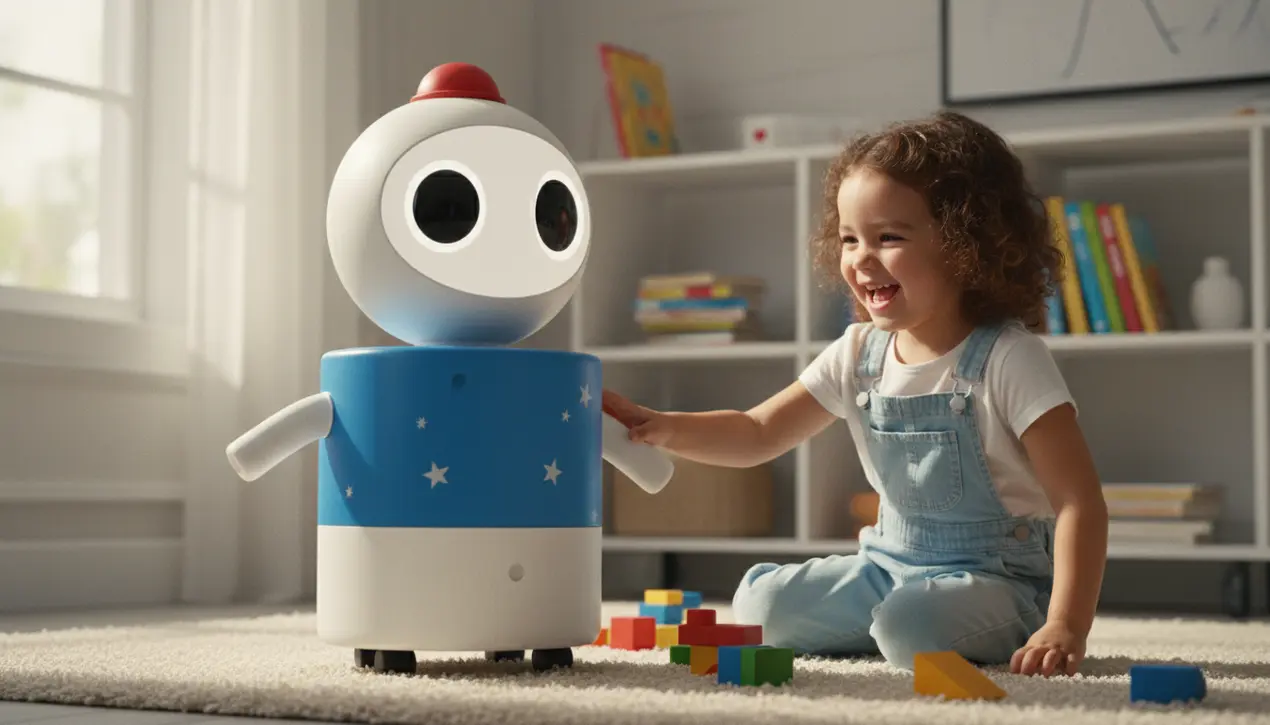
AIroboticsHuman-Robot Interaction
Half-bodied home robot Memo resembles playful cartoon character.
SO
Sophia King
2 days ago7 min read4 comments
In a landscape saturated with cold, utilitarian robotics, the arrival of Memo feels like a breath of fresh, whimsical air. This half-bodied home robot, designed not as a servile automaton but as a playful companion, immediately captivates with its cartoonish aesthetic.Its form—a round head crowned with a hat-like top piece, perched atop a simple cylindrical torso—is a masterclass in minimalist character design, evoking the friendly, approachable charm of a Pixar sidekick more than the uncanny valley of a humanoid replica. This deliberate departure from anthropomorphic convention is the core of its innovation.Where other companies pour millions into replicating human gait and facial features, Memo’s creators have focused on emotional resonance through simplicity. The robot’s roving base gives it a dynamic presence, allowing it to navigate the domestic stage not as a mere appliance, but as an active participant in the home's daily narrative.Its design language speaks directly to a UX philosophy centered on joy and accessibility; there are no intimidating control panels or complex interfaces, just an inviting silhouette that promises interaction without intimidation. This aligns with a broader trend in creative technology, where tools like Midjourney and Figma plugins are succeeding by lowering barriers to entry and making complex processes feel intuitive and even delightful.The implications are profound. By forgoing the pursuit of a perfect human replica, Memo sidesteps the inherent eeriness of near-human androids and instead carves a new niche: the domestic character.It’s a piece of generative art that moves, a functional sculpture whose primary job may be completing household tasks, but whose lasting impact will be on the emotional palette of our living spaces. We are moving beyond the era of the robot as a tool and into the era of the robot as a co-inhabitant, and Memo’s design brilliantly prefigures that future.It suggests that the most successful domestic AI won't be the one that best mimics us, but the one that best complements our environment with its own unique, and endearing, personality. This is where industrial design meets storytelling, creating a product that doesn’t just perform a function but contributes to the aesthetic and emotional narrative of our homes, much like a carefully chosen piece of art or furniture that somehow feels alive.
#robotics
#home robot
#design
#consumer electronics
#automation
#lead focus news
Stay Informed. Act Smarter.
Get weekly highlights, major headlines, and expert insights — then put your knowledge to work in our live prediction markets.
Related News
Comments
Loading comments...
© 2025 Outpoll Service LTD. All rights reserved.